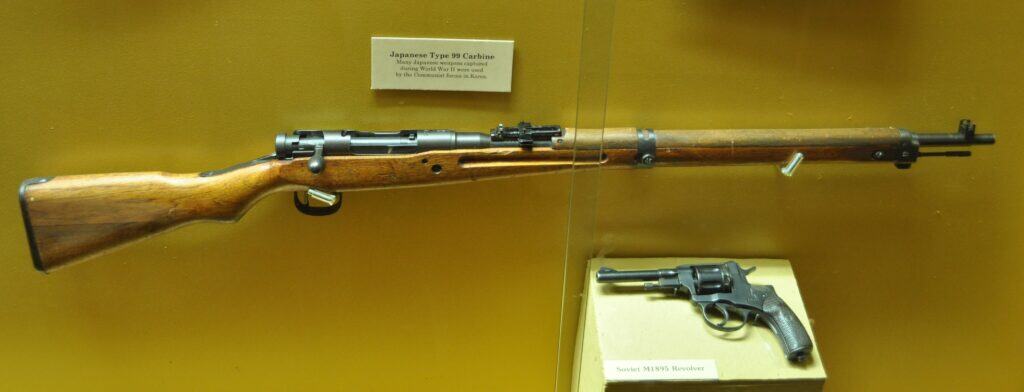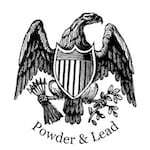
Introduction
The Arisaka Type 99 rifle stands as one of the most significant military bolt-action rifles of the Second World War, representing the peak of Japanese infantry firearm development. Developed as a successor to the Type 38 rifle, the Type 99 was engineered to improve upon its predecessor’s shortcomings, particularly in terms of firepower and ballistic performance. For collectors and military historians, the Type 99 is a critical piece in understanding Japanese wartime arms production, tactical evolution, and manufacturing variation under extreme wartime pressures.
Development and Historical Context
The Arisaka Type 99 rifle was officially adopted by the Imperial Japanese Army in 1939, during the early phases of World War II. Its development stemmed from the perceived inadequacy of the 6.5×50mm cartridge used in the Type 38 rifle, particularly in terms of stopping power when compared to the rifles used by other major powers. The new Type 99 was chambered in 7.7×58mm Arisaka, a more powerful cartridge intended to bring Japanese infantry firepower in line with contemporary Western armies.
Early prototypes were tested as early as 1937, and mass production commenced shortly afterward. The rifle’s introduction coincided with Japan’s escalating conflict in China and the expansion of hostilities in the Pacific. Despite intentions to fully replace the Type 38 with the Arisaka Type 99, the logistical challenges of wartime production meant that both rifles remained in simultaneous use throughout the conflict.
Technical Specifications
- Caliber: 7.7×58mm Arisaka
- Action: Bolt-action
- Overall Length: 44.1 inches (standard model)
- Barrel Length: 25.9 inches
- Weight (unloaded): Approx. 8.16 lbs
- Magazine: 5-round internal box, fed by stripper clips
- Muzzle Velocity: Approximately 2,440 to 2,500 feet per second depending on ammunition type
The Arisaka Type 99 action is a derivative of the Mauser system, modified with Japanese refinements. It uses a two-lug bolt with an integral claw extractor and features a safety knob at the rear, which doubles as a bolt release when depressed and turned. The action is considered exceptionally strong; testing conducted post-war by American ordnance personnel found it superior in strength to several contemporary rifles.
Variants
There are several distinct variants of the Type 99 rifle, each with features that reflect changes in manufacturing capabilities and battlefield demands. These variants are typically categorized into early, transitional, and late-war or “last ditch” models.
Arisaka Type 99 Short Rifle (Standard Infantry Model)
- Introduced: 1939
- Features: Full-length stock, monopod, anti-aircraft sights, chrome-lined bore, and provision for a bayonet.
- Manufacturers: Nagoya Arsenal, Toyo Kogyo (Hiroshima), Kokura Arsenal
The early Type 99 short rifles are the most complete in terms of features. They include an adjustable rear sight with anti-aircraft wings, a monopod for prone firing, and a dust cover over the bolt. The bore was chrome-lined for corrosion resistance—a notable feature uncommon in other military rifles of the time.
Arisaka Type 99 Long Rifle
- Length: 50 inches
- Production: Very limited, primarily for training and transitional use
- Purpose: Intended for transitional use from Type 38 long rifles
This variant is extremely rare and was produced in very limited numbers, largely before the short rifle became standard. It is generally seen as a stopgap measure during the shift in standardization.
Arisaka Type 99 “Last Ditch” Rifles
- Years of Production: Primarily 1944–1945
- Characteristics: Omission of non-essential features, cruder manufacturing quality, lack of monopod, no AA wings, unpolished metal, wooden buttplates, simplified sights.
These rifles were manufactured under increasingly desperate wartime conditions. The goal was to maximize output and conserve resources, which led to significant simplification in both design and finishing. Despite the rougher appearance, these rifles often remained mechanically sound and functional.
Arsenal Marks and Series
Each Arisaka Type 99 rifle carries a set of identifying marks that reveal its place of manufacture and its production series. These are critical for collectors in verifying authenticity and determining relative rarity.
- Chrysanthemum Crest (Imperial Seal): Stamped atop the receiver; symbolizes ownership by the Emperor. Often defaced post-war when surrendered to Allied forces.
- Arsenal Markings: Located to the left of the chrysanthemum; examples include:
- Nagoya Arsenal (encircled “N”)
- Kokura Arsenal (stacked cannonballs)
- Toyo Kogyo (Hiroshima plant of Mazda)
- Series Numbers: Found as a character to the left of the serial number; identifies the production run. Series 0 to Series 27 are known for Nagoya, for example.
Accessories and Attachments
Arisaka Type 99 rifles were issued with several accessories that are of great interest to collectors. These include:
- Bayonets: Type 30 bayonet, typically with a straight or hooked quillon. Several variations exist, and these are often marked with arsenal symbols matching the rifle.
- Monopod: A folding support leg under the forend, used in early production rifles.
- Anti-Aircraft Sights: Flip-up wings attached to the rear sight, marked for leading aircraft at various speeds.
- Dust Cover: A metal sleeve over the bolt to protect it from dirt and debris. Often removed by soldiers in the field due to noise.
- Sling: Web or leather slings were used, often secured with brass or steel fittings.
Ammunition and Ballistics
The 7.7×58mm Arisaka cartridge provides significantly greater ballistic performance than the older 6.5×50mm round. It fires a 175- to 180-grain bullet at velocities around 2,440 fps. Ballistic performance is broadly comparable to the .303 British or the .30-06 Springfield in terms of trajectory and terminal effectiveness.
Arisaka Type 99 rifles are often found with mismatched or substitute ammunition, which can be dangerous. Correct 7.7mm Japanese ammunition is crucial for both safety and historical fidelity. Collectors should avoid using .303 British or reformed brass unless properly headspaced and verified by a qualified gunsmith.
Collector Value and Rarity
Several factors influence the value of a Arisaka Type 99 rifle in the collector market:
- Condition: Rifles with intact finish, complete parts, and original bore lining are valued higher.
- Matching Numbers: All matching serial numbers (including bolt, floorplate, and dust cover) significantly increase value.
- Chrysanthemum Status: A rifle with an intact chrysanthemum (un-ground) is especially desirable, indicating it was not surrendered.
- Early vs. Late Production: Early production rifles with full features (AA sights, monopod, dust cover) command premium prices.
- Arsenal and Series: Some series and arsenal combinations are rarer than others. For instance, Toyo Kogyo rifles tend to be less common than Nagoya examples.
Post-War Use and Legacy
After Japan’s surrender in 1945, many Type 99 rifles were captured or surrendered and subsequently brought back to the United States as war trophies. Others were issued to police and militia forces in the post-war Pacific theater.
Some rifles were rechambered or sporterized in the post-war years for civilian hunting use. These modified rifles have limited collector value but represent a secondary market for affordable historical firearms.
Several countries, including China and Indonesia, used surplus Type 99 rifles during post-colonial conflicts, though such rifles often saw heavy wear and non-standard modifications.
Conclusion
The Arisaka Type 99 rifle is a testament to the complexity of wartime production and the ingenuity of Japanese arms design. From its robust action and high-quality early production to its simplified late-war versions, the Type 99 offers collectors a wide range of variants and historical insights. Whether prized for its engineering, valued for its role in the Pacific War, or collected for its unique markings and condition, the Type 99 remains an essential piece of any comprehensive military rifle collection. Careful examination of serial numbers, arsenal markings, and production details can yield fascinating stories embedded in each rifle's steel and wood.
Collectors seeking to build a representative Type 99 set should prioritize examples from different series, arsenals, and production stages, with special attention given to completeness and originality. When properly researched and preserved, the Arisaka Type 99 serves not only as a collectible artifact but also as a precise and durable example of mid-20th-century bolt-action rifle design.


If you know of any forums or sites that should be referenced on this listing, please let us know here.





